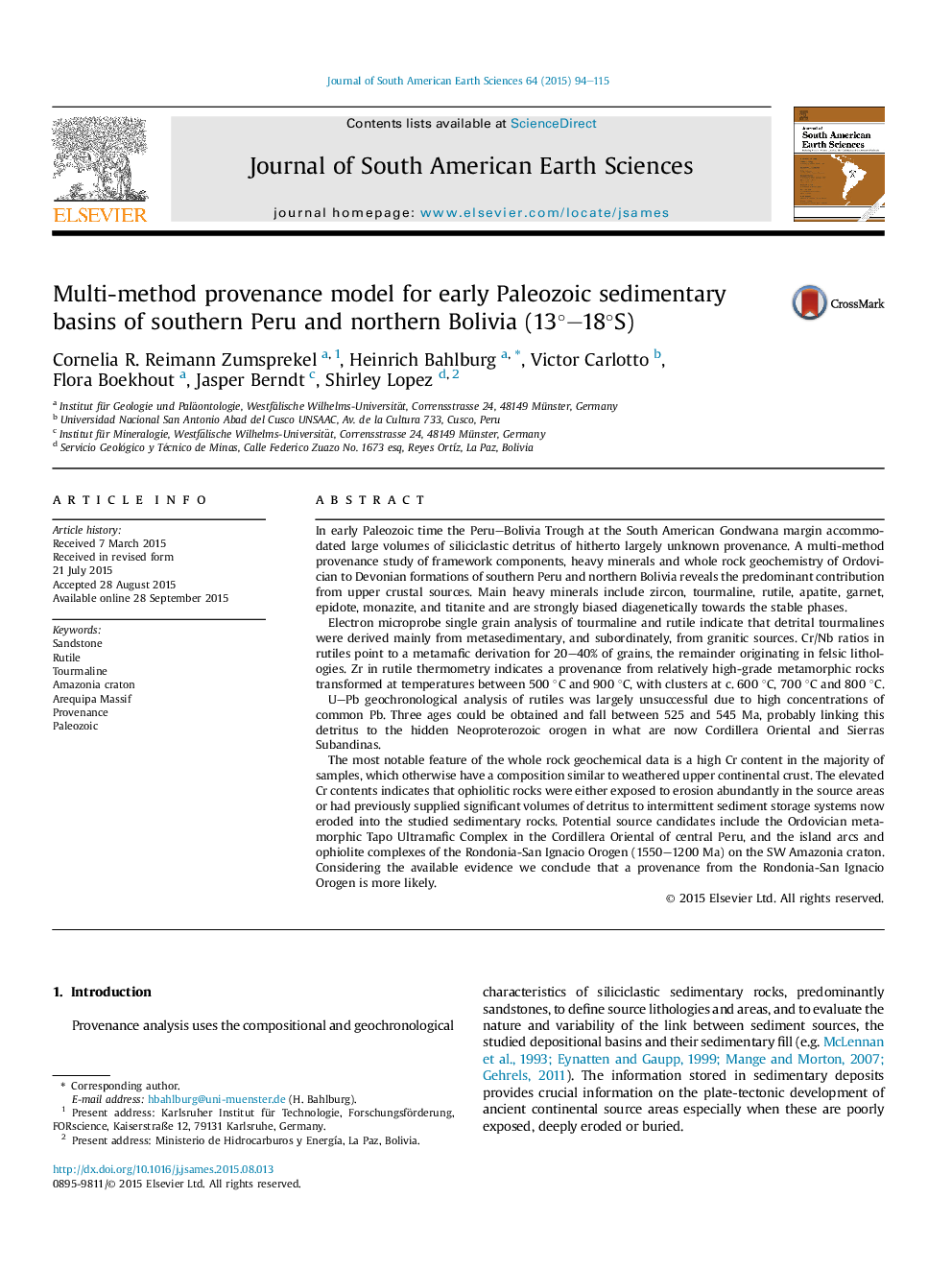| Article ID | Journal | Published Year | Pages | File Type |
|---|---|---|---|---|
| 4682112 | Journal of South American Earth Sciences | 2015 | 22 Pages |
•The first multi-method provenance study of the lower Paleozoic strata in southern Peru and northern Bolivia.•U–Pb age data on detrital rutile document contribution of a still enigmatic Neoproterozoic magmatic source.•Zr in rutile thermometry indicates provenance from high-grade metamorphic rocks transformed between 500 °C and 900 °C.•Ophiolite assemblages were significant sources of detritus to the Ordovician-Devonian Peru–Bolivia Trough.•The facies development of the trough is re-evaluated in light of new sedimentological field data.
In early Paleozoic time the Peru–Bolivia Trough at the South American Gondwana margin accommodated large volumes of siliciclastic detritus of hitherto largely unknown provenance. A multi-method provenance study of framework components, heavy minerals and whole rock geochemistry of Ordovician to Devonian formations of southern Peru and northern Bolivia reveals the predominant contribution from upper crustal sources. Main heavy minerals include zircon, tourmaline, rutile, apatite, garnet, epidote, monazite, and titanite and are strongly biased diagenetically towards the stable phases.Electron microprobe single grain analysis of tourmaline and rutile indicate that detrital tourmalines were derived mainly from metasedimentary, and subordinately, from granitic sources. Cr/Nb ratios in rutiles point to a metamafic derivation for 20–40% of grains, the remainder originating in felsic lithologies. Zr in rutile thermometry indicates a provenance from relatively high-grade metamorphic rocks transformed at temperatures between 500 °C and 900 °C, with clusters at c. 600 °C, 700 °C and 800 °C.U–Pb geochronological analysis of rutiles was largely unsuccessful due to high concentrations of common Pb. Three ages could be obtained and fall between 525 and 545 Ma, probably linking this detritus to the hidden Neoproterozoic orogen in what are now Cordillera Oriental and Sierras Subandinas.The most notable feature of the whole rock geochemical data is a high Cr content in the majority of samples, which otherwise have a composition similar to weathered upper continental crust. The elevated Cr contents indicates that ophiolitic rocks were either exposed to erosion abundantly in the source areas or had previously supplied significant volumes of detritus to intermittent sediment storage systems now eroded into the studied sedimentary rocks. Potential source candidates include the Ordovician metamorphic Tapo Ultramafic Complex in the Cordillera Oriental of central Peru, and the island arcs and ophiolite complexes of the Rondonia-San Ignacio Orogen (1550–1200 Ma) on the SW Amazonia craton. Considering the available evidence we conclude that a provenance from the Rondonia-San Ignacio Orogen is more likely.
Graphical abstractFigure optionsDownload full-size imageDownload as PowerPoint slide
